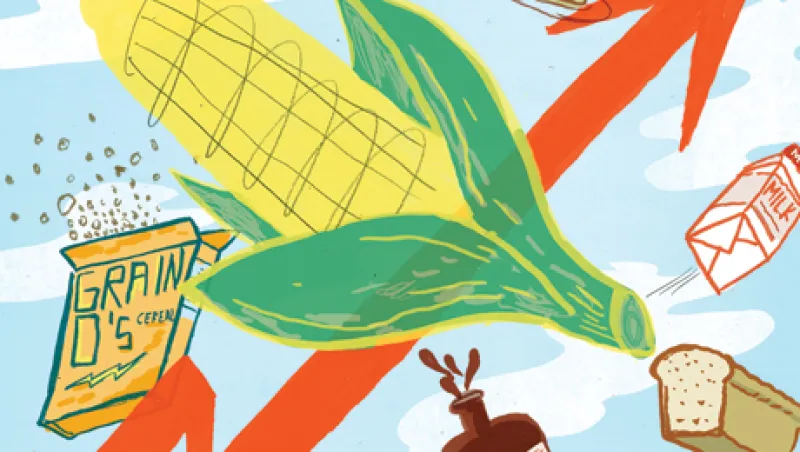THE COMMODITIES supercycle may be spinning its wheels, but the cost of raw foodstuffs will probably keep rising. The Organization for Economic Cooperation and Development and the United Nations’ Food and Agriculture Organization project that through 2021, real prices for agricultural commodities such as wheat, milk and poultry could climb an average of 10 to 30 percent higher than in the previous decade. The drivers of so-called agflation range from demand for biofuels to surging global meat consumption, which requires grain to feed livestock. But there will be plenty of ups and downs. “We think that the outlook is for prices to stay high, but also for them to be probably persistently volatile,” says Carmel Cahill, Paris-based senior counselor with the OECD trade and agriculture directorate.
Prices ebb and flow because end users react to increases by backing off, explains Christopher Narayanan, New York–based head of agricultural commodities research at Société Générale. “One of the things that’s hard for a long-term investor to capture is that short-term fluctuation,” Narayanan says. Some investors take a more passive long approach, he adds: “They might play a year out on the curve with the expectation that prices will eventually rise.”





